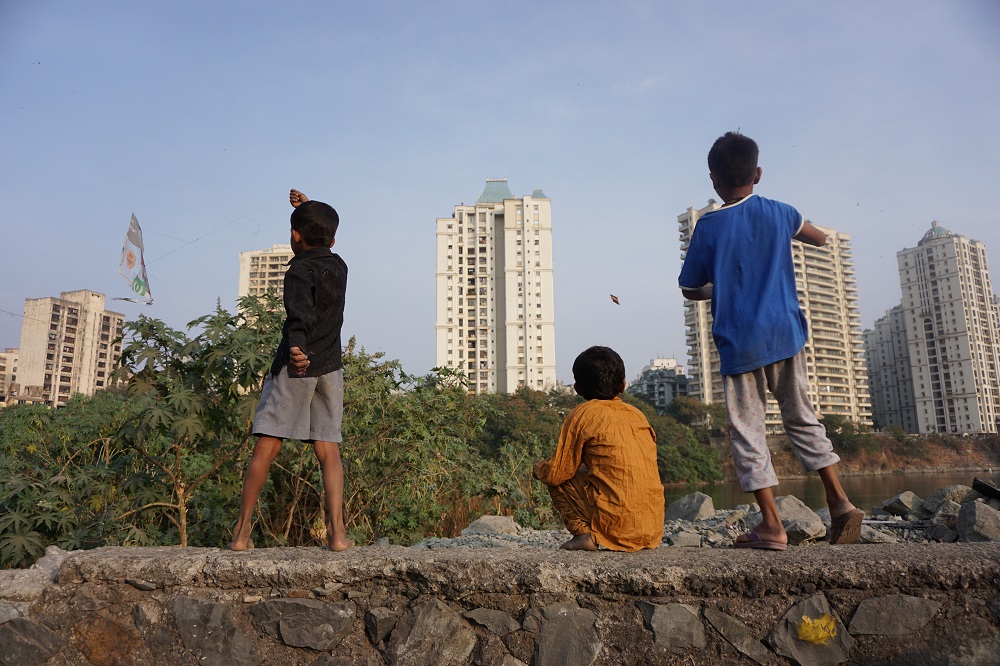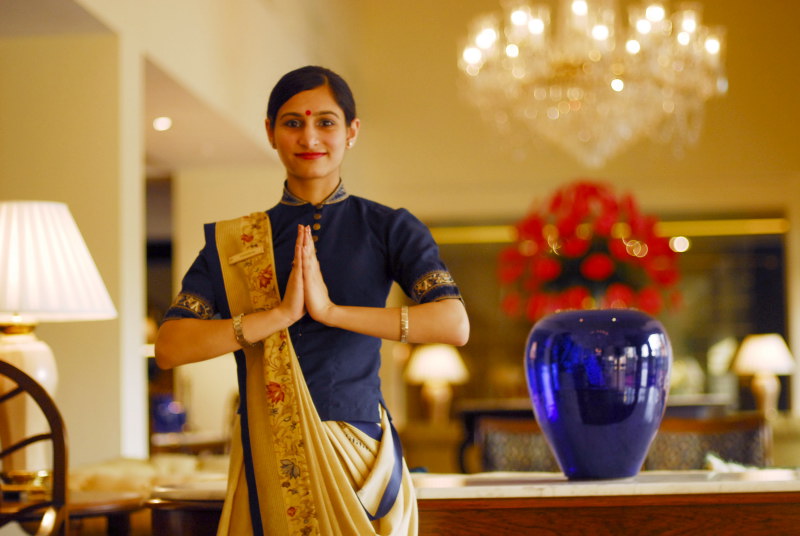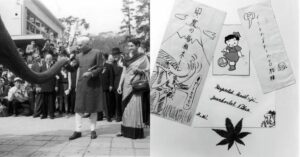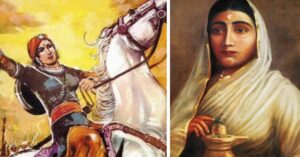‘India Is A Poor Country’ And Other Misconceptions We’ve Been Sold About India
Many people are surprised or confused as to why I would leave a life in London to live in India. There are many common perceptions about India, most are negative. It’s for that precise reason that I decided to moved to India to help change these misconceptions.

Many people are surprised or confused as to why I would leave a life in London to live in India. There are many common perceptions about India, most are negative. It’s for that precise reason that I decided to moved to India to help challenge these misconceptions.
I first came to India with the intention of backpacking around the country for three months and then going back home to London to pick up where I left off. During those three months though, I fell in love with the country. The reasons why I fell in love go on, but mostly, India surprised me and it wasn’t what I had expected.
I was able to see a different, lesser-known side to India that we foreigners don’t typically get to see from the comforts of our own countries. As a result of my first experience of visiting India, I decided to return to India to live because I want to try and show that other side to others. I hope that in sharing my experiences of India not only will it somehow confront common misconceptions people have about India but I hope that it will also promote more positive attitudes towards the country.
1. India is poor

This is something that I thought myself before I actually came to India. India is a developing country yes, but it’s not poor. It’s a rich country inhabited by poor people.
India has masses of wealth. It has one of the fastest growing economies in the world and in a 2016 New World Wealth Report on the world’s wealthiest countries, India ranked 7th ( its large population largely boosting this ranking). The problem is that this wealth is extremely unequally distributed. The difference in the wealth share held by India’s poorest and richest is enormous. The New World Wealth estimates India’s richest top 10% to own 76.3% of national wealth whilst its poorer portion hustles for a mere 4.1%. And the divide keeps increasing.
There’s no other place that showcases this inequality quite like India’s commercial capital, Mumbai. Mumbai has long been home to some of the richest people on the subcontinent and it also happens to have the third-largest slum in the world, home to between roughly 700,000 to about 1 million people, right in its centre.
2. People from the west can ‘save’ India
Again, another myth that i’m ashamed to admit I bought in to before I came to India. Hundreds of charities, NGOs and organisations send thousands of volunteers to India each year. We head to India full of hope with the best of intentions that we will create a positive impact in the lives of people less fortunate than ourselves and somehow leave India in a little better state than how we found it. Sometimes we even feel that our very being would somehow inflict some positive change, that our more ‘privileged’ upbringings will automatically dispel any cultural or economic boundaries and render us heroes. We think we know what the people need when in fact we don’t. How can we? We haven’t lived their lives.
I can’t be the spokesperson for the plight of the Indian people. I can’t comment on anyone’s life experiences other than my own. I can try to understand, but my understanding will always be limited and can never be a substitute for the voices of the people who are actually living this reality.
The truth is the west is pretty problematic too for it’s own reasons. You just have to look at the events of last year to see that we’re not doing so well over there ourselves. India needs it’s own people to save it. People that know about the real needs of its people, who speak the same language as those in need, who look similar, who share the country’s history and struggles and understand its culture. Not someone who has just jumped off a plane looking for a travel experience with a bit of meaning.
3. India is a vegetarian/vegan paradise

India is great for its availability, choice and the accessibility of its vegetarian dishes. If you’ve given up meat for ethical reasons, however, India is a far cry from the idyllic non-meat eaters utopia that it’s often made out to be.
Besides the nation’s holy cow, animals, in particular those that make up India’s humongous meat industry, are grossly mistreated. And you don’t even have to travel to remote farms or secret warehouses to see this cruelty, it’s happening on most main shopping streets in plain view for all to see. Instead of feeling satisfied, many vegetarians and vegans who travel to India are left outraged.
4. Everyone says ‘Namaste’ to each other all the time

In western countries, many people have adopted the use of the hindi word ‘namaste’ to give the impression that they are really spiritual, or at least like to think they are. Namaste has almost become synonymous with yoga or meditation or some other zen-like practice adopted by the west and you’ll often hear it used at the end of many yoga classes.
It may come as news to many then that namaste has little to do with yoga in modern India. ‘Namaste’ or ‘namaskar’ (the more formal and more commonly used version) is a respectful form of greeting in Hindu custom. It can be used as a way of acknowledging and welcoming a relative, guest or stranger and as a way of expressing gratitude. I’ve been in India over a year and the only time someone has said ‘namaste’ to me is when I’ve been in India’s yoga capital Rishikesh and the person was responding to me saying it first. People don’t really say it.
5. The smell and heat of India ‘hits you when you get off the plane’
I’ve flown into India a lot now and into many different points of entry and I can assure you, nothing ‘hits you’ when you get off the plane. Depending on the time of year you go, you might notice that yes, it is hot, but if you stepped off a plane in Barcelona in August you’d have the same experience there too. It is true that India has many intense aromas. Incense is burned in the street and outside of temples, rubbish is openly burnt on the streets, spices with pungent smells are used in dishes and sometimes cooked on the roadside and yes, unfortunately people do openly defecate in the streets. But these things are not everywhere you go and most of the smells (bar the defecation and burning rubbish) are actually very pleasant.
You may also like: MY STORY: Moving to India & Living With an Indian Family Taught Me the Real Meaning of Gratitude
6. Indian is a language
India is as diverse as humanity itself. There is considered to be as many as 461 languages and regional dialects spoken across India (at least 14 of which are said to have become extinct). For convenience sake, the Constitution of India has recognised 22 languages as the official languages of India. Hindi is widely reported as the national language with roughly 41% of the nation speaking it as their mother tongue. Hindi, however, is spoken mostly in the North and is not widely spoken in the southern part of India. English is also widely recognised as a national language and it’s widely spoken across the whole of India.
So to those who ask if I’ve learnt ‘Indian’ yet, the polite answer is no, the honest answer is that’s a stupid question and it doesn’t make sense.
7. All Indian food is spicy

It’s a question that I’m asked not just by friends at home but by locals also, ‘are you coping ok with the food?’ Not all Indian food is red hot and it doesn’t leave me clutching my behind as I frantically run to the nearest toilet everytime I eat it. Most Indian dishes use a variety of spices but they are not necessarily ‘spicy,’ mostly they are just very flavoursome. If chilli is a concern, just ask the waiter to use less chilli or none at all or simply opt for one of the many Indian dishes that doesn’t use chilli anyway.
8. All Indians enjoy spicy food
And FYI, a lot of Indian people can’t take spice either. It’s not only foreigners that have sensitive tummies.
9. India doesn’t have ‘normal’ toilets
Public toilets found in major cities and tourist sites are usually western style, with a cleaning faucet and toilet paper. In the more rural areas, toilets are of the squat variety and locals may use the ‘hand-and-water’ technique, which involves carrying out ablutions with a small jug of water and the left hand. To foreigners not familiar with this bathroom habit it can be seen as gross. It’s actually a lot more hygienic than western style habits that use toilet paper and many foreigners who try it soon warm to it and it’s something they miss when they return home.
10. Every Indian has visited the Taj Mahal

Actually, most Indians that I have spoken to have not visited the Taj Mahal and have no interest in visiting either.
Like this story? Or have something to share? Write to us: [email protected], or connect with us on Facebook and Twitter.
NEW: Click here to get positive news on WhatsApp!
This story made me
- 97
- 121
- 89
- 167
Tell Us More
We bring stories straight from the heart of India, to inspire millions and create a wave of impact. Our positive movement is growing bigger everyday, and we would love for you to join it.
Please contribute whatever you can, every little penny helps our team in bringing you more stories that support dreams and spread hope.



















